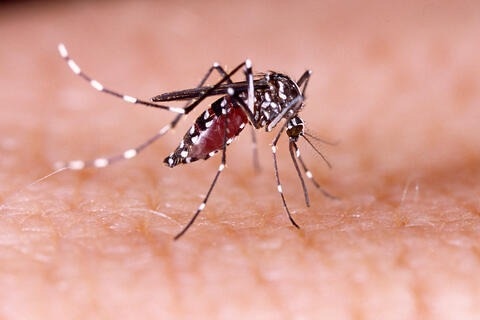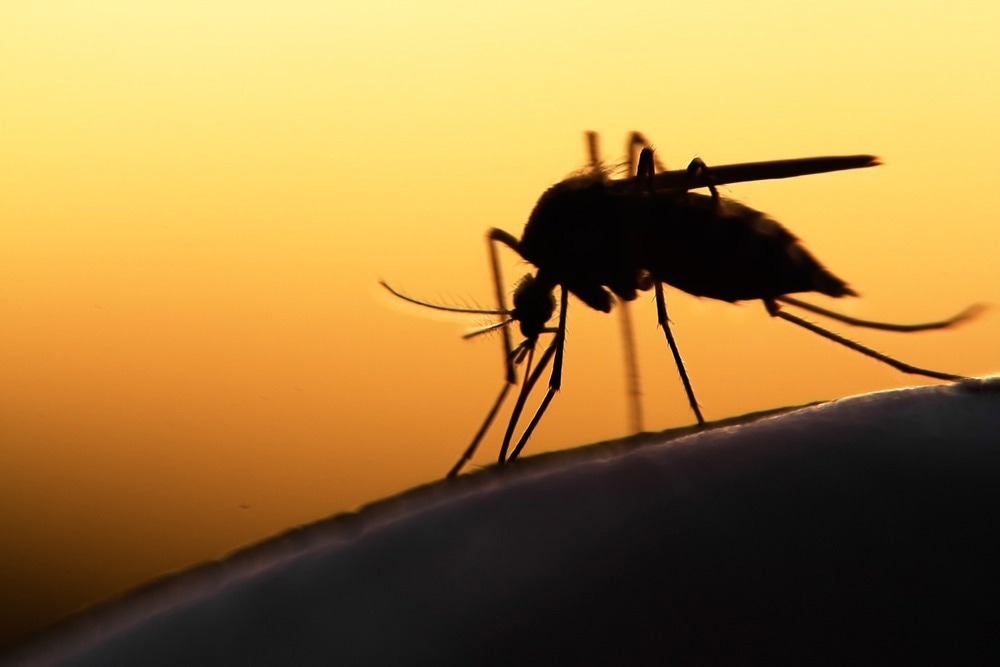Reviewed by Danielle Ellis, B.Sc.Sep 22 2022
Mosquitoes spreading dengue, Zika, and yellow fever are attracted to their victims by a scent produced from the human skin. To date, the accurate composition of that scent has not been recognized.
 Aedes aegypti mosquito probing human skin. Image Credit: TacioPhilip/iStock/Getty.
Aedes aegypti mosquito probing human skin. Image Credit: TacioPhilip/iStock/Getty.
A team of researchers headed by UC Riverside found that the combination of carbon dioxide and two chemicals—2-ketoglutaric and lactic acids—evokes a scent that kindles the mosquito to trace and land on its victim. The chemical cocktail also facilitates probing, using piercing mouthparts to locate blood.
Female Aedes aegypti mosquitoes, vectors of Zika and also dengue, chikungunya, and yellow fever viruses, are particularly attracted by this chemical mixture. Even though this mosquito originated in Africa, it has advanced to tropical and subtropical regions globally, including the United States.
The observations of the research are published in the journal Scientific Reports.
Though others have identified compounds that attract mosquitoes, many of them don’t elicit a strong, rapid effect. This one does.”
Ring Cardé, Entomologist, University of California, Riverside
Mosquitoes employ a number of indicators, such as carbon dioxide, sight, temperature, and humidity, to find their targets. Recent studies by Cardé, however, indicate that skin scents are much more crucial for identifying a bite location.
We demonstrated that mosquitoes land on visually indistinct targets imbued with these two odors, and these targets aren’t associated with heat or moisture. That leaves skin odor as the key guiding factor.”
Ring Cardé, Entomologist, University of California, Riverside

Image Credit: mycteria/Shutterstock.com
After comprehending the importance of odor in enabling mosquitoes successfully feed on humans, Cardé intended to identify the precise chemicals that make the scent highly potent for the insects. Lactic acid was discovered to be one of the chemical elements in the odor cocktail in 1968.
Ever since, numerous studies have found that human-produced substances, such as ammonia and carbon dioxide, also lure these insects. Cardé, who has spent 26 years studying mosquitoes, concluded that these additional compounds were not potent attractants.
Cardé says, “I suspected there was something undiscovered about the chemistry of odors luring the yellow fever mosquito. I wanted to nail down the exact blend.”
The 2-ketoglutaric acid could not have been identified using the methods that chemists generally employ, according to Cardé. This acid would not have been detected by gas chromatography, which separates substances based on their polarity and molecular weight.
“I think that these chemicals may not have been found before because of the complexity of the human odor profile and the minute amounts of these compounds present in sweat,” added chemist Jan Bello, formerly of UCR and now with insect pest control company Provivi.
While exploring mosquito attractors, Cardé sought Bello’s help, who took compounds from the sweat of his own feet. His socks were filled with glass beads, and he walked with them for 4 hours per odor collection.
Bello says, “Wearing the beads felt almost like a massage, like squeezing stress balls full of sand, but with your feet. The most frustrating part of doing it for a long time is that they would get stuck in between your toes, so it would be uncomfortable after a while.”
The inconvenience was worth the investment. Bello purified compounds from the sweat left on the sock beads and tracked how the chemicals affected the behavior of mosquitoes. The combination that was the most active was thus revealed.
Future research is intended to ascertain whether the same substance works against other mosquito species and why different people are being bitten differently. Some are more appealing to these mosquitoes than others, but no one has yet determined why, according to Cardé.
The current discovery might not result in the production of new repellants. However, the researchers are optimistic that their discovery could be employed to attract, trap, and destroy disease-spreading mosquitoes.
At the end of the day, we’re really pleased we found these compounds, because we weren’t always sure we would. We had a hunch they existed, but hunches don’t always work out.”
Ring Cardé, Entomologist, University of California, Riverside
Source:
Journal reference:
Bello, J. E. & Cardé, R. T. (2022) Compounds from human odor induce attraction and landing in female yellow fever mosquitoes (Aedes aegypti). Scientific Reports. doi.org/10.1038/s41598-022-19254-w.